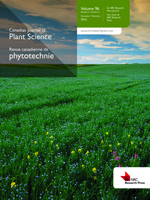Sarikamis, G., Yildirim, A. and Alkan, D. 2015. Glucosinolates in seeds, sprouts and seedlings of cabbage and black radish as sources of bioactive compounds. Can. J. Plant Sci. 95: 681-687. The glucosinolate content of seeds, sprouts and seedlings of white head cabbage and black radish were analyzed in order to determine changes in aliphatic and indole glucosinolates during seed germination and early seedling growth. Both species with distinct glucosinolate profiles exhibited higher levels of aliphatics and to a much lesser extent indoles. Glucosinolate content decreased in germinating seeds and seedlings upon imbibition, followed by a slight increase after 48 h of germination. Total glucosinolates were highest in young seedlings at true leaf stage compared with seeds and sprouts in both species. The findings of the present study demonstrate changes in glucosinolates from seed to sprout and seedling during germination and early seedling growth as a particularly prominent factor in maximizing the concentration of the bioactive compounds available for improved health benefits.
How to translate text using browser tools
10 March 2015
Glucosinolates in seeds, sprouts and seedlings of cabbage and black radish as sources of bioactive compounds
Gölge Sarikamiş,
Arda Yildirim,
Didem Alkan
ACCESS THE FULL ARTICLE
It is not available for individual sale.
This article is only available to subscribers.
It is not available for individual sale.
It is not available for individual sale.

Canadian Journal of Plant Science
Vol. 95 • No. 4
July 2015
Vol. 95 • No. 4
July 2015




